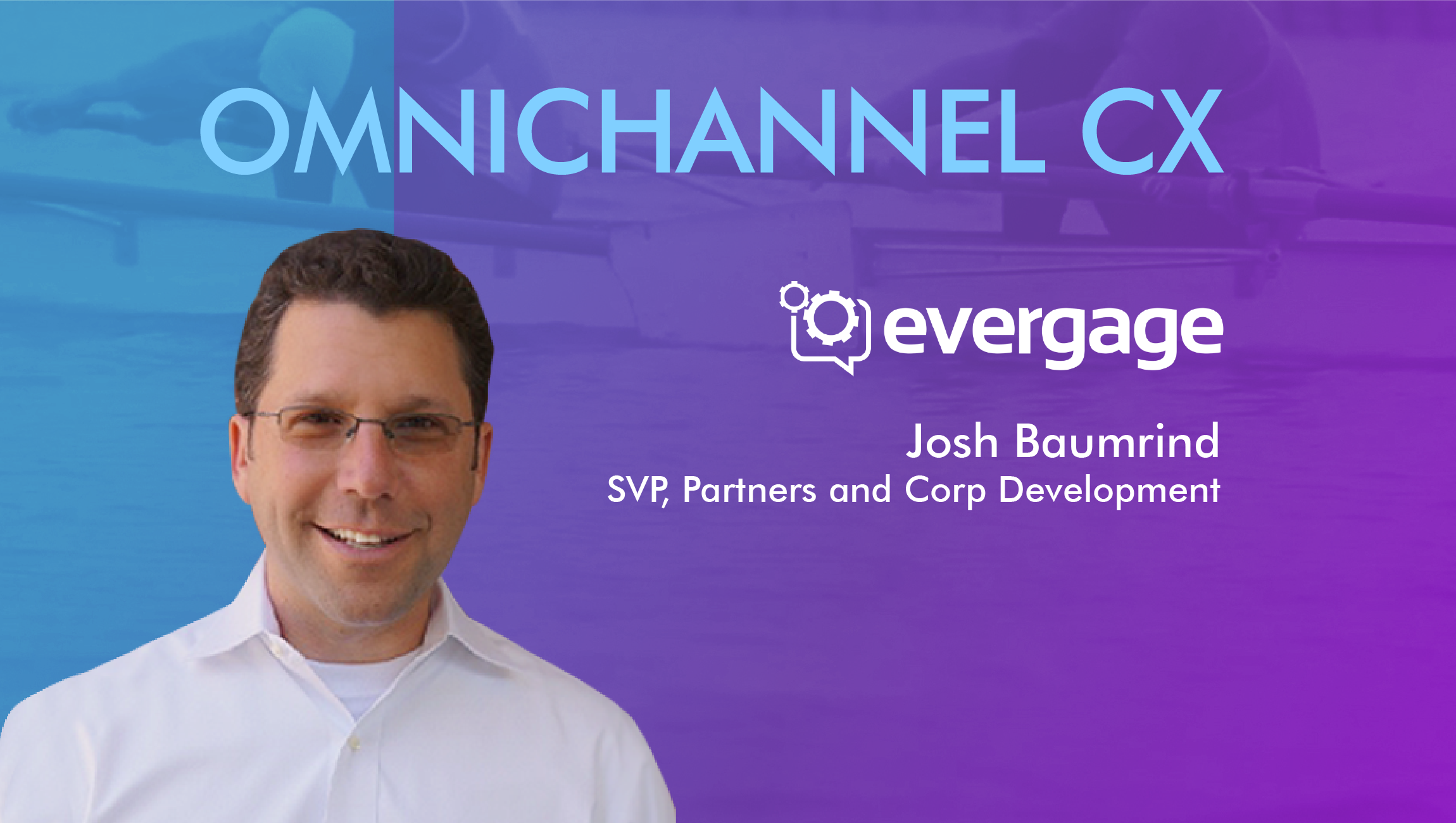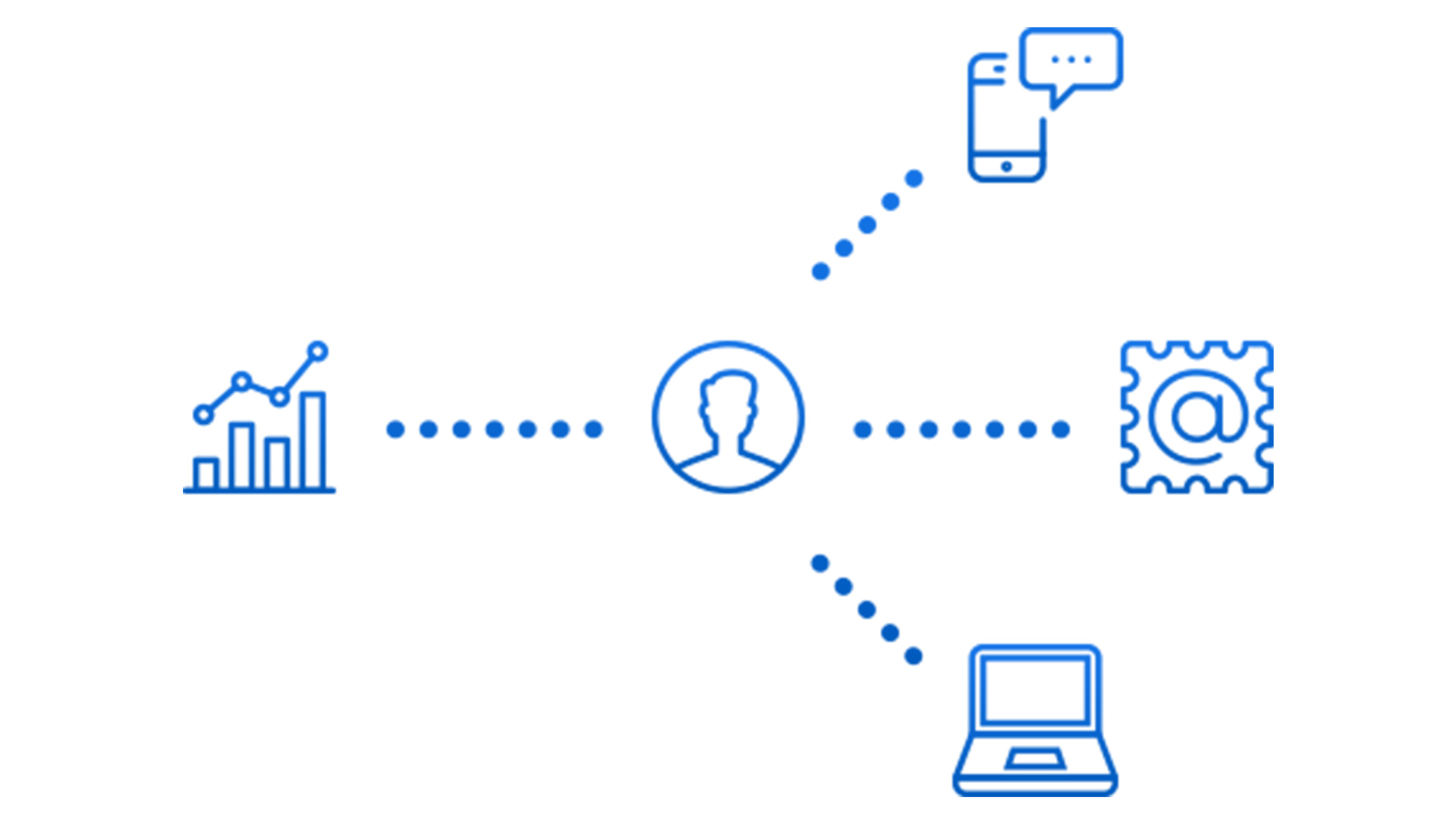Josh Baumrind
SVP of Partners and Corporate Development, Evergage
The ‘Power of 1‘ in omnichannel marketing. Sounds very promising to marketers, but could be the hardest to achieve, especially when there is an ever-growing number of marketing channels to focus on in 2018. Is it merely delivering a more effective, dynamic customer experience; or does it go beyond the contemporary standards of “in-the-moment” engagements with the customers! To better understand the “Power of 1” concept by Evergage, we spoke to Josh Baumrind, SVP of Partners and Corporate Development, who dove deeper into how the company helps to drive content experience technology for in-store marketing platforms.
Html code here! Replace this with any non empty text and that's it.
Tell us about your role at Evergage?
As Evergage’s SVP of partnerships and corporate development, I lead the company’s strategic alliances with firms across the value chain including agencies, consultancies, system integrators and technology providers.
How do marketers monetize integrated online and store personalization technologies? Tell us about Evergage’s omnichannel CX capabilities?
You’ve hit on the key problem. Often marketers for retail brands are using different technology vendors, integrators and consulting services for their digital operations versus their stores. This leads to a proliferation of tools and silos of customer data that prevent a retailer from having a complete view of a customer’s engagement online and in stores so they cannot fully personalize and monetize it.
Through our recent alliance with Sophelle and One Step Retail Solutions, customer purchase activity and insights from retail store operations will be synchronized with that customer’s behavior across digital channels. Initially, we are focused on point-of-sale equipment but will move quickly to clientele apps, kiosks, and even in-store beacons. The key is that all the online and in-store data is synchronized in a single customer data platform with unique profiles that drive omnichannel personalization at the 1:1 level in real time. Evergage already does this across websites, web and mobile apps, onsite search and email – but through the alliance, we bridge the gap to bring in-store data.
As an example, say you’ve been shopping on a clothing store’s website for a new winter jacket, but you also looked at a pair of gloves and some hats. You then go to that retailer’s store and purchase the winter jacket. Through our work with our partners, when the retailer emails your receipt it can include offers for the gloves and hat you viewed or recommendations on other complementary winter gear you might need based on your preferences and interests. Most importantly, you wouldn’t get recommended to purchase the jacket you already bought!
How does your alliance with Sophelle and One Stop Retail plug the ‘omnichannel gaps’ in modern marketing campaigns?
The ‘omnichannel gap’ represents a disjointed experience for customers when they engage with a single brand across its various channels. This is a challenge for any company that has multiple customer touchpoints between their website, email or apps, but it is especially pronounced in retail where a consumer often has an entirely different experience between a retailer’s digital channels and their stores. Forrester Research has pointed out the increasing importance of closing this gap, as they found 72% of retailers say personalization is their top priority for improving the customer experience in stores.
This alliance is specifically designed to close the omnichannel gap by combining Evergage’s personalization platform with in-store and online data from One Step Retail Solutions and Sophelle’s agency services – to create compelling customer experiences and integrate the digital and in-store customer journey.
What are the core principles driving the content experience technology for in-store marketing platforms?
By far the biggest challenge is the data integration – that is, the ability to synchronize customer data from in-store sources, combine and process it in milliseconds with data from digital channels, and make real-time personalization decisions based on it. While difficult, this is the strategic goal for retailers – to have a single customer data platform that unifies preferences, insights, and intent for each customer at the individual level across both stores and digital channels.
How do you see contemporary CX management platforms fitting into a modern CMO’s tech stack?
As customer experience and personalization become a strategic imperative for businesses regardless of size or industry, we are seeing these technologies evolve. Whereas organizations previously purchased and integrated “point solutions” with separate customer data sets used by individuals across different channels – such as the website or email, for example – they now need platforms with more comprehensive functionality. Now, CMOs recognize the immense value of having a unified customer data platform that can power personalization consistently across all their customer touchpoints. This has always been our vision and the platform approach that Evergage delivers.
What role does your recent acquisition of MyBuys play in your retail strategy?
Retail has always been one of our key areas of strength and focus, from a vertical industry perspective, the acquisition of MyBuys accelerates our position. The acquisition gives leading e-commerce companies that use MyBuys — a first-generation product recommendations technology — access to more robust personalization and recommendations capabilities by transitioning them to Evergage’s next-gen personalization platform. Hundreds of leading e-commerce companies use MyBuys technology to deliver product recommendations on their websites and via email to millions of shoppers, utilizing online and offline data, which also speaks to bridging the omnichannel gap we’ve been discussing.
Equally important, we’re excited to welcome employees with retail knowledge, skills, and experience, including Jason Shriver, the former head of client success at MyBuys, and Rick Berman, MyBuys’ CTO.
Looking ahead, what mistakes should marketers avoid in 2018?
Gartner predicts that by 2020, smart personalization engines used to recognize customer intent will enable digital businesses to increase their profits by up to 15%, which underscores why personalization is critical for just about every company. That said, the mistake we see repeated is that personalization is not done strategically and holistically and instead is being handled by individuals or teams at the channel level. This is a mistake as it leads to a proliferation of point personalization tools, and, more importantly, it puts customer data into silos and then when each silo is unaware of the broader channel data, they have no ability to deliver omnichannel insights. That is why marketers are increasingly looking to invest in a customer data platform — with unified customer profiles — to deliver 1:1 experiences across all channels, including stores.
Thanks for chatting with us, Josh.
Stay tuned for more insights on marketing technologies. To participate in our Tech Bytes program, email us at news@martechseries-67ee47.ingress-bonde.easywp.com











